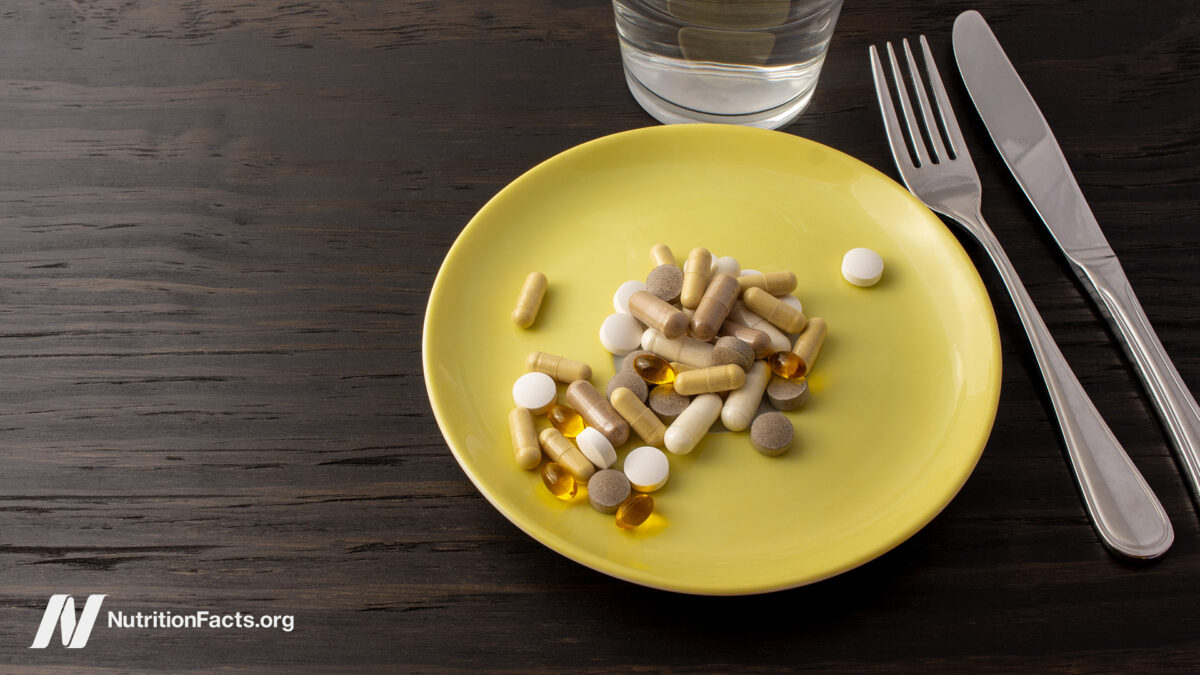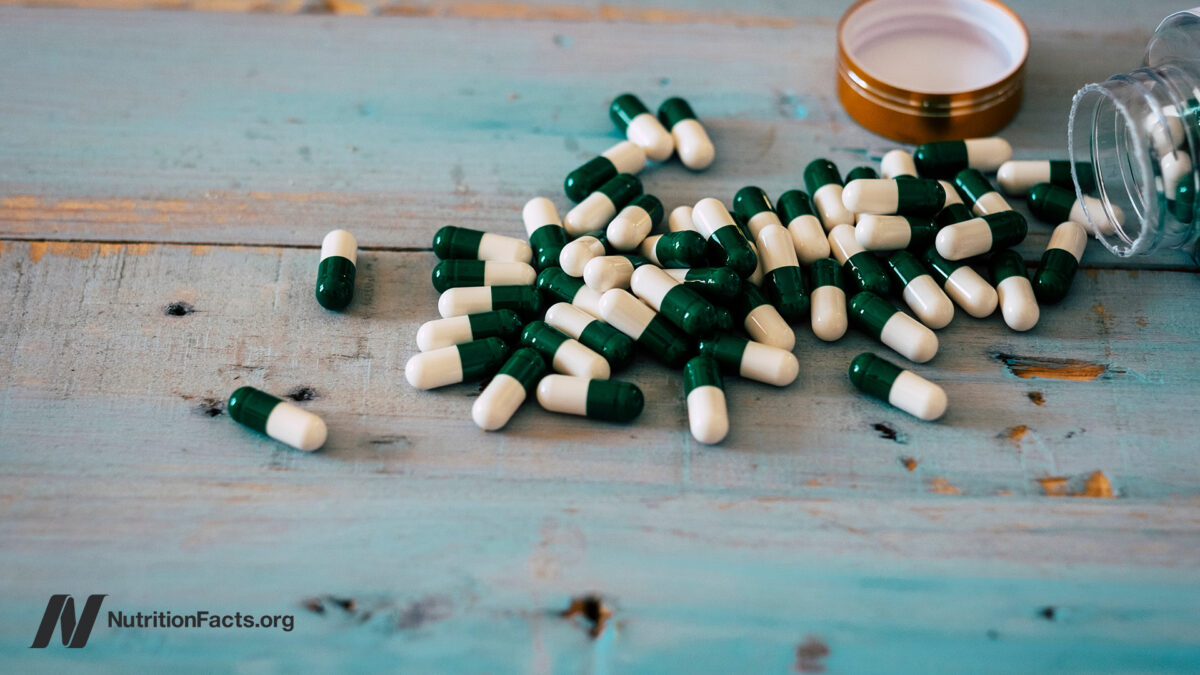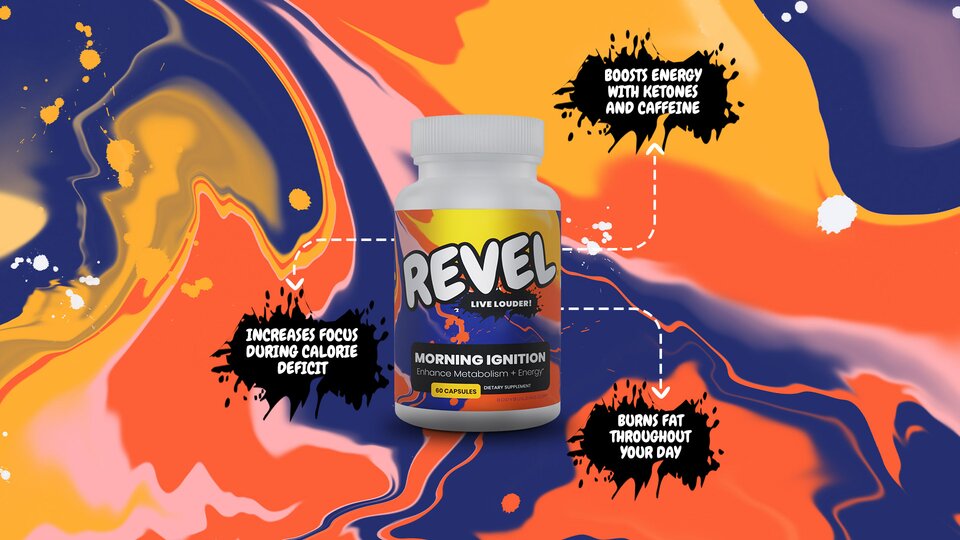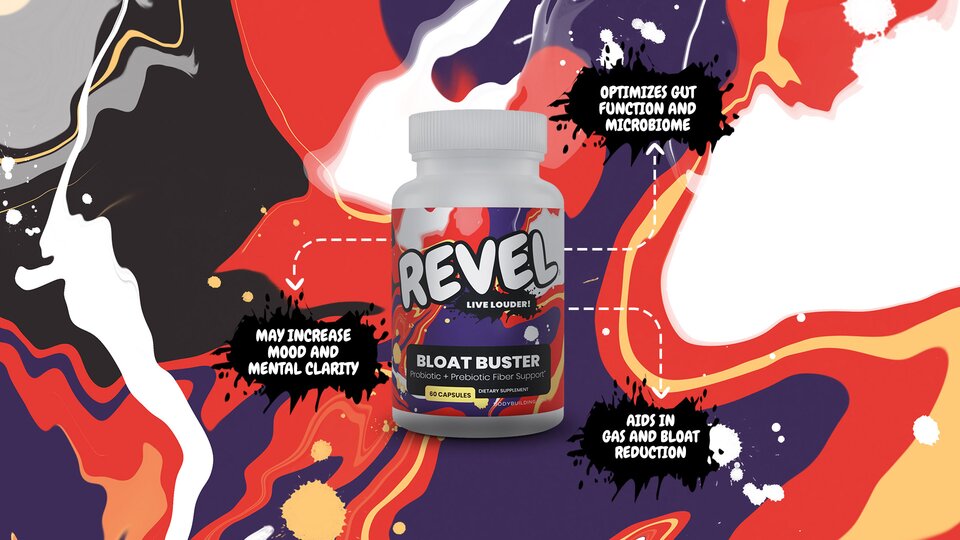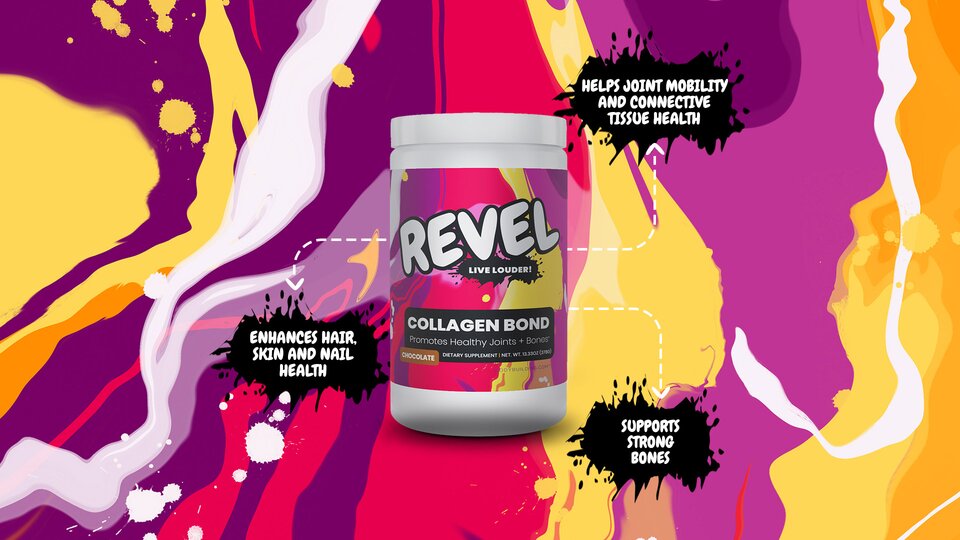
Building muscle is such hard work we need every advantage we can get. Peptides are one such potential advantage. However, a lot of confusion and misinformation is circulating about this subject. Maybe you’ve heard of peptides for bodybuilding but aren’t sure how they work or which ones are the best. In this article, we’ll identify the five best peptides for muscle growth, detail the correct dosages, and explain how peptides work for muscle gain.
Quick Takeaways
- Peptides are naturally occurring short chains of amino acids with various functions in the body.
- Peptides can promote muscle growth by stimulating growth hormone release, inhibiting myostatin, enhancing collagen synthesis, improving nutrient uptake, and reducing inflammation.
- Peptides are legal for research purposes but may require a prescription for medical use.
The five best peptides for muscle growth are:
- Ipamorelin: A synthetic growth hormone-releasing peptide (GHRP) that stimulates growth hormone production, primarily benefiting muscle growth and fat loss. The recommended dosage is 200-300 micrograms per day.
- CJC-1295: Another GHRP that enhances growth hormone release and promotes muscle growth, potentially aiding fat loss and improving sleep quality. Dosage typically ranges from 2000-4000 mcg per week.
- Hexarelin: A GHRP that stimulates growth hormone release, potentially aiding muscle gain, fat reduction, cardiovascular health, and cognitive function. The typical dosage is 200-300 micrograms daily for 12-16 weeks.
- Sermorelin: A growth hormone-releasing peptide designed to increase growth hormone production. The dosage typically ranges from 500 to 1000 micrograms daily.
- GHRP-6: Another GHRP that stimulates growth hormone release, potentially increasing energy levels and aiding in muscle growth and fat loss. Common dosage is 100 to 150 mcg, one to four times daily.
The 5 Best peptides for muscle growth
Peptides are naturally made in the body, but just like testosterone, as we age, their production decreases. Synthetic peptides have been developed to supplement the body’s natural production. Here’s an overview of the five synthetic peptides that are recognized as most effective for muscle gain.
1. Ipamorelin

Ipamorelin is a man-made peptide that is classified as a human growth hormone-releasing peptide (GHRP). It is widely considered to be the best peptide for muscle growth. It stimulates the body to secrete growth hormone from the brain’s anterior pituitary gland.
Ipamorelin’s specific mode of action is to mimic the hormone ghrelin, which allows it to bind the ghrelin receptors in the pituitary gland. This stimulates the release of growth hormone-releasing hormone, which, in turn, promotes greater GH secretion.¹
Muscle Growth: One of the advantages of Ipamorelin is its selective action. It primarily stimulates the release of GH without significantly affecting other hormones. This selectivity minimizes the risk of side effects associated with some other peptides or growth hormone-releasing compounds. Unlike some other peptides, Ipamorelin does not bring on a stress response.
Increased growth hormone release may increase lean muscle mass potential and enhance muscle repair. Coupling the use of Ipamorelin with weight training will position your body for optimal muscle growth and mass increase.
Fat Loss: Ipamorelin also promotes fat loss. Growth hormone boosts the burning of body fat for energy. This peptide also increases metabolism to reduce body fat. This dual action on muscle growth and fat loss makes it popular among athletes and bodybuilders.
Recovery: As well as promoting muscle growth, Ipamorelin assists with post-workout recovery by promoting tissue repair. It may also improve sleep quality, which is vital for exercise recovery and muscle growth.
Dosage: The recommended dosage of Ipamorelin typically ranges from 200 to 300 micrograms per day, administered through subcutaneous injections. The timing of administration of this peptide for muscle growth is often before bedtime to align with the body’s natural GH release pattern during sleep.
Legality: Ipamorelin is not approved for recreational or athletic use in many countries. Its use is usually restricted to medical purposes, such as treating growth hormone deficiencies. In the United States, the FDA has not approved Ipamorelin for human use. It is banned by the World Anti-Doping Agency (WADA) and the United States Anti-Doping Agency (USADA).
Research: Most of the research on Ipamorelin has been conducted on animals. The scientific community considers such research to be ‘pre-clinical. In one study on rats, the researchers were interested in seeing how effective Ipamorelin was in reducing bone damage. While they found that the peptide was able to reverse bone damage in the rats, they also noted that it led to significant increases in muscle strength.²
There has been no direct research evidence that Ipamorelin increases muscle mass. The closest we have is a number of rodent studies that showed that rats injected with this peptide were significantly stronger than those not. We can also hypothesize from the fact that WADA bans Ipamorelin and other GH-enhancing peptides that they may have a muscle and strength-enhancing effect.³

Ipamorelin stimulates the pituitary gland to release growth hormone. Ipamorelin is also associated with memory and cognition, pain relief, and body temperature regulation…
2. CJC-1295

CJC-1295 is another Growth Hormone Releasing Hormone (GHRH) peptide. As such, its key benefit is to stimulate the release of growth hormone. Like Ipamorelin, this is a selective action peptide, minimizing any side effects.
Originally, CJC-1295’s development was geared towards helping people dealing with excess fat accumulation in the context of HIV/AIDS. However, clinical trials were stopped following an incident in which one participant passed away. Even though researchers concluded that the participant’s death was not related to CJC-12, research on it was largely abandoned.
Different Forms: CJC-1295 is available in various forms, including a version boosted with Drug Affinity Complex (DAC). This addition helps the compound bind to blood proteins, leading to a significantly longer half-life compared to CJC-1295 without DAC. While CJC-1295 DAC boasts a half-life of about one week, its no-DAC counterpart clears from the body within about an hour.
Increased Growth Hormone Levels: CJC-1295 demonstrates its muscle-building promise by significantly elevating blood levels of growth hormone and insulin-like growth factor-1 (IGF-1). These effects lay the foundation for potential muscle growth.
Fat Loss: CJC-1295 may promote fat loss through the release of growth hormone, which boosts fat lipolysis. Increased muscle mass, which is promoted by this peptide, also increases metabolism to burn more calories at rest.
Quality Sleep: The peptide may also contribute to improved sleep quality. Its parent compound, growth hormone-releasing hormone, has been associated with reduced cortisol levels at bedtime, an increase in rapid-eye-movement (REM) sleep, and slow-wave sleep. Quality sleep is crucial to the muscle-building process.
Research: Most of the research into the effects of CJC-1295 has been done on rodents. There are a small number of human trials, but these usually had very small sample populations. One such study looked at its effect on sleep quality. The results showed reduced cortisol levels at the onset of sleep, increased rapid eye movement (REM) during sleep, and increased slow-wave sleep. Interestingly, the peptide was administered intra-nasally.⁴
No human studies on healthy subjects show increases in muscle mass as a result of taking CJC-1295. However, when it comes to fat, studies have shown that the hormone prolactin, which is produced by the pituitary gland, promotes fat loss in obese women. Because CJC-1295 helps to reduce prolactin levels, it may indirectly help with fat loss.⁵
Dosage Considerations: Administered via subcutaneous injections, CJC-1295 is typically dosed between 2000-4000 mcg per week. To ensure safety, it’s advisable to begin with a lower dosage and incrementally adjust based on individual needs.

CJC 1295 is a synthetically produced peptide. While originally created for fighting diseases, it was found to be effective for increasing protein synthesis and growth hormone. Protein synthesis increases muscle mass and muscle function…
3. Hexarelin

Hexarelin is yet another growth hormone-releasing peptide (GHRP). It operates through the activation of growth factor pathways, particularly those involving phospholipid-dependent protein kinases. This stimulates GH release, which stimulates protein synthesis, creating new muscle tissue.
Fat Reduction: Besides muscle growth, Hexarelin has shown promise in reducing body fat. The heightened GH levels can boost metabolism and promote the use of stored fat for energy.
Cardiovascular and Bone Health: Hexarelin is believed to support cardiovascular health by binding to CD36 receptors found on blood cells. Athletes may also benefit from its potential to strengthen bones and increase joint flexibility.
Cognitive Benefits: Researchers are interested in learning more about the neuroprotective benefits of Hexarelin. A 2022 study suggests that this peptide may be able to reduce brain inflammation, potentially preventing cell damage.⁶
Research: A 2017 rodent study focused on the ability of Hexarelin to prevent muscle loss in cancer patients undergoing chemotherapy. Results showed that the injection of this peptide led to significantly less muscle and strength loss in the group that took Hexarelin. The study authors hypothesized that this was due to improved mitochondrial function, less inflammation, and better regulation of cell turnover, all of which were attributed to the administration of the peptide.⁷
When it comes to Hexarelin and fat loss, a Canadian study is of interest. In this study, researchers treated the white fat cells of rats with Hexarelin to see what effect it would have. They noted that the peptide administration resulted in decreased triglyceride accumulation and higher levels of genes that control fat metabolism.⁸
Recommended Dosage: Hexarelin is taken as an oral injection. The recommended daily dosage typically falls within the range of 200-300 micrograms. Users should start with lower doses and gradually adjust as needed. Cycles typically last 12 to 16 weeks to achieve optimal results.
4. Sermorelin

Sermorelin is another GHRG peptide created to increase growth hormone production in the pituitary gland. This peptide originally received FDA approval for treating growth hormone deficiency. However, in 2008, its approval for commercial use was discontinued, though it remained available as a research chemical. This means that Sermorelin is no longer prescribed as a medication but can be purchased ‘for research purposes.’
Muscle-Building Potential: There is research that suggests that Sermorelin can promote some lean muscle mass gains in men who have been diagnosed with hypogonadism. Its beneficial lean muscle mass-building effects on healthy men are less clear.
Enhanced Sleep Quality: Users of Sermorelin have reported improved sleep quality. Adequate sleep is essential for muscle recovery and overall health.
Immune Function and General Well-being: Beyond muscle-building potential, Sermorelin may boost immune function and contribute to overall health and wellness. While its primary focus is on GH release, it may have secondary effects that boost the body’s immune response.
Research: A 2020 research paper by Deepanker et al. stated that Sermorelin can significantly improve the body composition of male cancer patients undergoing chemotherapy while also helping to prevent fat gain. There are, as yet, no studies to show the peptide’s effects in terms of muscle gain on healthy people.⁹
There is also research indicating that Sermorelin may have anti-aging benefits. In one study, the participants were nine healthy young men. Researchers found that Sermorelin injections could stop age-related decline in growth hormone and IGF-1 levels.¹⁰
Optimal Dosage: Sermorelin is typically administered in daily doses ranging from 500 to 1000 micrograms, delivered by injections.
5. GHRP-6

GHRP-6 is another ghrelin-mimicking growth hormone-releasing peptide. Increasing ghrelin levels in the body signals the pituitary gland to increase growth hormone release. Users also report that GHRP-6 may also increase energy levels, allowing you to train harder.
The increased GH level brought on by using GHRP-6 stimulates the liver to increase its insulin-like growth factor-1 (IGF-1) production. This hormone helps to burn body fat by increasing fat lipolysis. GHRP-6’s six amino acid sequence signals the brain to release growth hormone while not allowing the regulatory hormone somatostatin to prevent that release.
As well as promoting muscle gain through increased GH release and stimulating fat loss, GHRP-6 may also promote better sleep, increase energy levels, and boost immune function.
Dosage Recommendations: GHRP-6 is administered orally. A common dosage is 100 to 150 mcg, one to four times daily.
Understanding Peptides
Peptides are short chains of amino acids consisting of 50 or fewer individual amino acids. Longer amino acid chains are classified as proteins. Peptide bonds join them together.
We classify peptides based on the number of amino acids in their chain:
- Oligopeptides: Short peptides made of a small number of amino acids.
- Polypeptides: Longer chains of amino acids, typically ranging from 10 to several hundred.
- Proteins: Very long polypeptides, often consisting of hundreds to thousands of amino acids.
Peptides perform the following functions in the body:
- Hormones: Many hormones in the body, such as insulin and growth hormone, are peptides. They regulate vital processes like metabolism and growth.
- Neurotransmitters: Peptides like serotonin and dopamine are neurotransmitters that facilitate communication between nerve cells.
- Enzymes: Some peptides act as enzymes, catalyzing biochemical reactions crucial for digestion, metabolism, and DNA replication.
- Antibiotics: Certain peptides have antimicrobial properties and can be used as natural antibiotics.
- Structural Components: Collagen, a structural protein in connective tissues, contains peptides.
Research into peptides has led to breakthroughs in medicine, including the development of peptide-based drugs for various diseases.

How Peptides Foster Muscle Growth
There are a number of mechanisms through which synthetic peptides may promote muscle growth:
1. Stimulating Growth Hormone (GH)
A class of muscle-building peptides called growth hormone secretagogues or Growth Hormone-secreting peptides (GHSPs) stimulates growth hormone release in the pituitary gland. The most effective growth hormone secretagogues are Ipamorelin, GHRP-6, and GHRP-2.
Growth hormone promotes muscle growth by stimulating protein synthesis. This is the process by which muscle is repaired, and new muscle tissue is created in response to the stress of resistance training. GH also stimulates the liver to produce Insulin-Like Growth Factor (IGF-1). This hormone is also a key player in the processes that lead to hypertrophy.
Growth hormone has also been shown to help prevent muscle cells from breaking down, preventing catabolism.
2. Myostatin Inhibition
Myostatin is a type of protein that actually works against muscle growth. Some synthetic peptides are designed to block myostatin so that muscle cells can develop without restriction. A prime example of a myostatin-inhibiting peptide is Follistatin.
3. Stimulating Collagen Synthesis
Some synthetic peptides are designed to improve collagen synthesis. The most abundant protein in the body, collagen, promotes strong, healthy bones, ligaments, and tendons. By strengthening these parts of the body, these peptides indirectly support resistance training ga and muscle growth.
4. Improved Nutrient Uptake
Some synthetic peptides are made to speed up nutrient and oxygen transportation to the muscle cells. This enhances muscle repair and regrowth after a workout.
5. Anti-Inflammatory Effects
Specific peptides possess strong anti-inflammatory properties. This helps combat the detrimental muscle cell effects of oxidative stress from intense workouts. These peptides may also reduce inflammation and muscle soreness post-workout.

Peptide Side Effects
When used in accordance with prescription guidelines, peptides are generally safe. However, there are some potential adverse side effects to be aware of. Here are some general side effects common to all peptides:
- Injection Site Reaction: Injection is considered the most effective form of peptide administration. This may cause pain, swelling, or other irritation at the injection site.
- Allergic Reactions: Some people may have an allergy to a specific peptide. This may cause symptoms such as breathing problems, itchiness, or hives.
- Hormonal Interruption: Peptides may interfere with the normal synthesis of hormones. This may result in hormonal imbalances, leading to mood swings, appetite changes, and increased fatigue.
- Water Retention: Some peptides can cause water retention, leading to bloating and swelling in the hands, feet, or face.
- Digestive Issues: Some people may experience stomach pain, diarrhea, or constipation as a result of the peptide effect on gut hormones.
- Headaches: Some people have reported experiencing headaches when taking certain peptides.
Let’s now zoom in on the side effects of the five peptides we are featuring in this article:
- Ipamorelin: This is considered to be one of the safest peptides. However, some people have experienced minor headaches, dizziness, and food cravings.
- CJC-1295: Mild side effects such as fatigue and redness of the skin accompanied by a tingling sensation, known as flushing, have been experienced.
- Hexarelin: Users of Hexarelin may experience increased cortisol release. This may cause insomnia and mood changes. Some people have also reported water retention and increased appetite.
- Sermorelin: Some users have had nausea and headaches,
- GHRP-6: Side effects of GHRP-6 include increased appetite that could result in unwanted weight gain. Some people may also experience bloating and water retention.

Peptide FAQS
Are peptides legal?
The ambiguous answer to this simple question is yes and no. While a number of peptides can only be purchased with a doctor’s prescription, many others are legal ‘for research purposes only.’ That means that you can legally buy them but not actually consume them. That’s because they haven’t been FDA-approved for humans. That is why online retailers sell peptides clearly marked ‘for research purposes only.’ Of course, what the purchaser does with the product after purchase is out of the control of the seller.
How do you take peptides?
The form of peptide administration depends on the specific peptide being used. Injection is the most common form. Some peptides, such as BPC-157 and TB-500, are taken orally in capsule or tablet form. Oxytocin and desmopressin are examples of two peptides that are administered nasally in spray form. Others are applied topically in lotion, serum, or lotion form.
Are peptides steroids?
No, peptides are not steroids. They are short amino acid chains with specific bodily functions, such as promoting the release of hormones. Steroids are synthetic versions of the hormone testosterone. While they can both support muscle growth and workout recovery, steroids have a more powerful effect. At the same time, anabolic steroids carry far greater health risks than peptides.
Are peptides better than SARMs?
Whether peptides are better than SARMs depends on what your goal is. If it is to build muscle, then the small amount of research suggests that SARMs have an advantage over peptides in hypertrophy. When it comes to fat loss, peptides are more effective because they stimulate the release of growth hormone, which, in turn, stimulates the breakdown of stored fat.¹¹

Conclusion
Peptides are a promising supplemental tool for those who are already training hard and eating smart to gain muscle. Remember, though, that they are not a steroid substitute nor guaranteed to pack muscle into your body. As we’ve seen, the research on healthy humans is very limited.
We know peptides are much safer than other chemical muscle-building avenues. The five best peptides for muscle growth are the HGH promoters Ipamorelin, CJC-1295, Hexarelin, Sermorelin, and GHRP-6. If you decide to experiment with any of them, be sure to stick to the recommended dosage guidelines and get yourself to your doctor if you experience any serious side effects.
Our recommended online peptide supplier is Regenics, which offers a comprehensive service that includes a detailed blood panel, micronutrient testing, and an InBody composition scan. Based on your results, they then develop a plan that serves your unique wellness needs, meets your short-term goals, and improves your long-term health.
References
- N Mohammadi, Ehsan, et al. “Attenuation of Visceral and Somatic Nociception by Ghrelin Mimetics.” Journal of Experimental Pharmacology, vol. Volume 12, Aug. 2020, pp. 267–274,
- Andersen, N.B., et al. “The Growth Hormone Secretagogue Ipamorelin Counteracts Glucocorticoid-Induced Decrease in Bone Formation of Adult Rats.” Growth Hormone & IGF Research, vol. 11, no. 5, Oct. 2001, pp. 266–272,
- Andersen, N.B., et al. “The Growth Hormone Secretagogue Ipamorelin Counteracts Glucocorticoid-Induced Decrease in Bone Formation of Adult Rats.” Growth Hormone & IGF Research, vol. 11, no. 5, Oct. 2001, pp. 266–272,
- Perras, Boris, et al. “Sleep and Endocrine Changes after Intranasal Administration of Growth Hormone-Releasing Hormone in Young and Aged Humans.” Psychoneuroendocrinology, vol. 24, no. 7, Oct. 1999, pp. 743–757,
- Kok, Petra, et al. “Prolactin Release Is Enhanced in Proportion to Excess Visceral Fat in Obese Women.” The Journal of Clinical Endocrinology & Metabolism, vol. 89, no. 9, Sept. 2004, pp. 4445–4449,
- Meanti, Ramona, et al. “Protective Effects of Hexarelin and JMV2894 in a Human Neuroblastoma Cell Line Expressing the SOD1-G93A Mutated Protein.” International Journal of Molecular Sciences, vol. 24, no. 2, 1 Jan. 2023, p. 993, www.mdpi.com/1422-0067/24/2/993,
- Sirago, Giuseppe, et al. Growth Hormone Secretagogues Hexarelin and JMV2894 Protect Skeletal Muscle from Mitochondrial Damages in a Rat Model of Cisplatin-Induced Cachexia. Vol. 7, no. 1, 12 Oct. 2017, www.ncbi.nlm.nih.gov/pmc/articles/PMC5638899/,
- Rodrigue-WayAmélie, et al. “A Growth Hormone-Releasing Peptide Promotes Mitochondrial Biogenesis and a Fat Burning-like Phenotype through Scavenger Receptor CD36 in White Adipocytes.”
- Endocrinology, vol. 148, no. 3, 1 Mar. 2007, pp. 1009–1018,
- Sinha, Deepankar K., et al. “Beyond the Androgen Receptor: The Role of Growth Hormone Secretagogues in the Modern Management of Body Composition in Hypogonadal Males.” Translational Andrology and Urology, vol. 9, no. S2, 1 Mar. 2020, pp. S149-S14S159, tau.amegroups.com/article/view/33160/28655,
- Corpas, E, et al. “Growth Hormone (GH)-Releasing Hormone-(1-29) Twice Daily Reverses the Decreased GH and Insulin-like Growth Factor-I Levels in Old Men.” The Journal of Clinical Endocrinology & Metabolism, vol. 75, no. 2, Aug. 1992, pp. 530–535,
- Teichman, Sam L., et al. “Prolonged Stimulation of Growth Hormone (GH) and Insulin-like Growth Factor I Secretion by CJC-1295, a Long-Acting Analog of GH-Releasing Hormone, in Healthy Adults.” Zenodo, 1 Apr. 2006, zenodo.org/record/1083962#.XyjqvhNKgyk,













